This page highlights some of the most significant social science research papers related to the ShakeAlert System and earthquake early warning in general.
The Generational Gap: Children, Adults, and Protective Actions in Response to Earthquakes
Rachel Adams, Jennifer Tobin, Lori Peek, Jolie Breeden, Sara McBride, and Robert de Groot
Earthquake drills in the United States currently recommend the protective action “drop, cover, and hold on” in the event of shaking yet little is known about whether this guidance is followed in schools and homes by children and adults. To fill this gap, this research examined protective actions taken by children and adults during the 2018 Anchorage, Alaska earthquake and the 2019 Ridgecrest, California earthquake sequence. Findings suggest that a generational gap exists that could compromise the safety of young people as well as the adults who care for them.
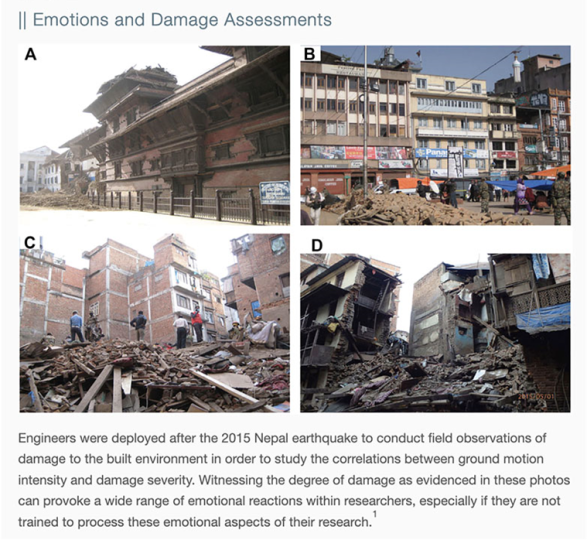
Development of a Companion Questionnaire for ‘Did You Feel It?’: Assessing Response in Earthquakes Where an Earthquake Early Warning May Have Been Received
James D Goltz, David J Wald, Sara K McBride, Robert de Groot, Jolie K Breeden, and Ann Bostrom.
Assessing how earthquake early warning is perceived and utilized by alert recipients is considered essential. A related strategy and the goal of the present research is to develop a brief questionnaire, consistent with those already developed, as a supplement to the United States Geological Survey’s “Did You Feel It?” questionnaire that has provided earthquake intensities and information on behavioral response in earthquakes, both domestic and international, since 2004.
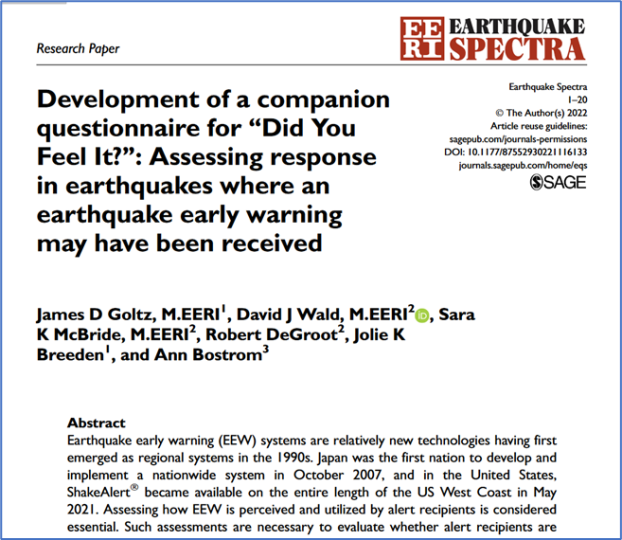
Typology Development of Earthquake Displays in Free-Choice Learning Environments, to Inform Earthquake Early Warning Education in the United States
Danielle F. Sumy, Mariah R. Jenkins, Sara K. McBride, and Robert-Michael de Groot.
Free-choice learning environments, such as museums, national parks, interpretive trails, and visitor centers, are trusted sources of information in their communities and support lifelong learning. Earthquake education in these spaces creates awareness of earthquake hazards and risk in areas where people live or visit and, in turn, may increase engagement in preparedness behavior. We analyzed a sample of existing earthquake exhibits and their themes in the United States and explored how different display types are uniquely engaging, finding that most displays did not include information about how to prepare for an earthquake or associated protective actions.
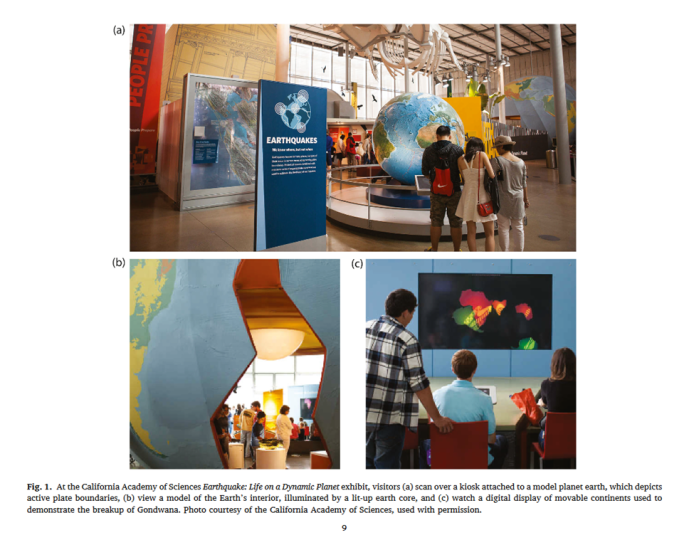
Earthquake Early Warning Message Testing: Visual Attention, Behavioral Responses, and Message Perceptions
Jeannette Sutton, Laura Fischer, Lori E James, and Sarah E Sheff
Earthquake early warning (EEW) systems have the potential to facilitate the delivery of lifesaving information to individuals in the path of damaging shaking before it reaches them. While much attention has been devoted to measuring the technological feasibility in terms of reach, accuracy, and latency of EEW message delivery, one additional aspect that merits considerable attention is the effectiveness of alerts themselves; do they deliver actionable information that can lead to protective actions taken by message receivers? In this project, we investigated individual responses to a simulated EEW message in a laboratory environment.
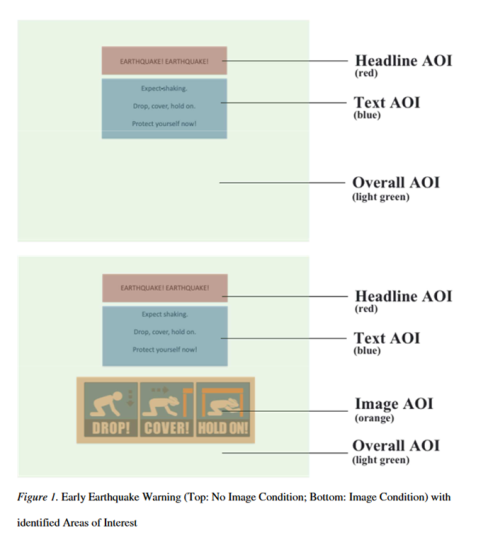
Public education about ShakeAlert earthquake early warning: evaluation of an animated video in English and Spanish
Jenny Crayne, Carla Herrán, Danielle Sumy, Marcie Benne, Todd Shagott, and Lori Peek
This mixed methods, dual-language (English/Spanish) study evaluates an animated video designed to increase awareness, understanding, and action related to ShakeAlert EEW. Results indicate that the video was enjoyable, easily understandable, and positively impacted viewers’ intentions to ‘Drop, Cover, and Hold On’ (DCHO) following a ShakeAlert-powered alert. Viewers also expressed a desire for more information about how to receive alerts and how to protect themselves in situations where DCHO is impractical. This study suggests that animated video, developed and disseminated in multiple languages, can be an effective tool for impacting public understanding and behavior related to geohazards. Additionally, the process and findings of this study suggest that outcomes may be improved by engaging multilingual and multicultural audiences earlier and throughout the video development process.
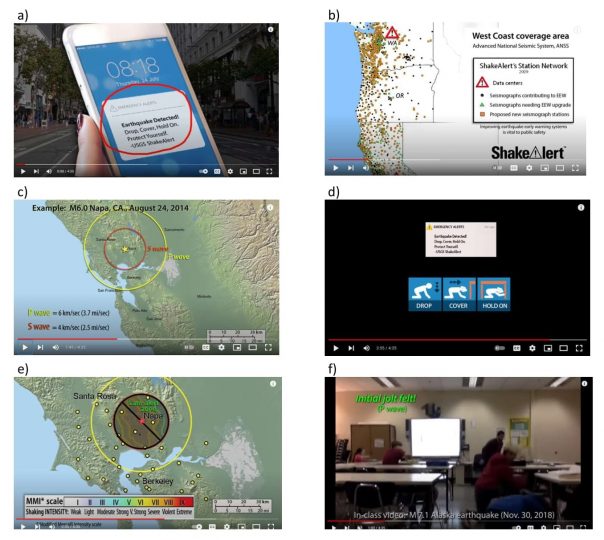
Evidence-based guidelines for protective actions and earthquake early warning systems
Sara K McBride, Hollie Smith, Meredith Morgoch, Danielle Sumy, Mariah Jenkins, Lori Peek, Ann Bostrom, Dare Baldwin, Elizabeth Reddy, Robert de Groot, Julia Becker, David Johnston, and Michele Wood
As Earthquake Early Warning systems, like ShakeAlert, develop, it is important to provide evidence-based recommendations for protective action so people know how to protect themselves when they receive an alert. Factors emerging from relevant literature include: (1) social, cultural, and environmental context, such as which people are present, what their social roles are, and in what type of building they are located when an earthquake happens, (2) demographic and experiential variables, such as gender and age as well as previous history with earthquakes; and (3) magnitude and intensity that influence the duration and impacts of the earthquake itself.
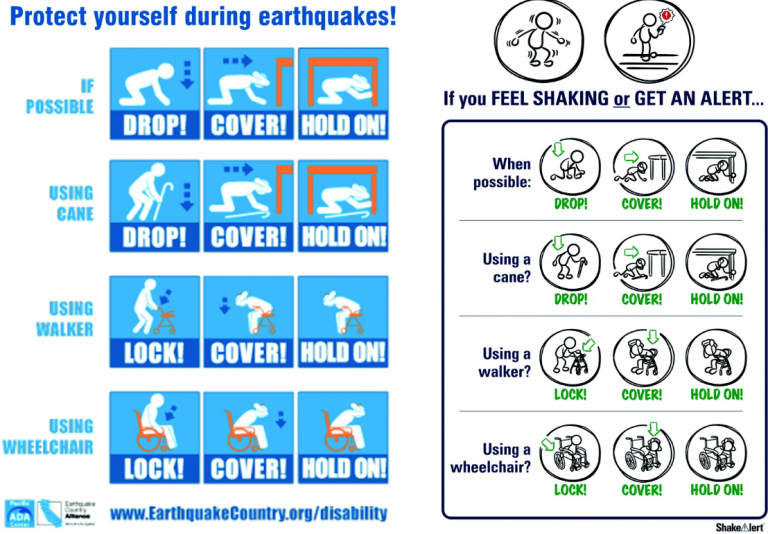
Developing post-alert messaging for ShakeAlert, the earthquake early warning system for the West Coast of the United States of America
Sara K McBride, Ann Bostrom, Jeannette Sutton, Robert M. deGroot, Anne-Marie Baltay, Brian Terbush, Paul Bodin, Maximilian Dixon, Emily Holland, Ryan Arba, Paul Laustsen, Sophia Liu, and Margaret Vinci
Planned post-alert messaging can provide timely, crucial information to both emergency managers and ShakeAlert operators as well as calibrate expectations among various publics or public user groups and inform their responses to future alerts. We develop post-alert messaging in six steps: (1) assessment of ShakeAlert performance to date, (2) characterization of human behavior and response to earthquake alerts, (3) presentation of a decision tree for issuing post-alert messages, (4) design of a critical set of post-alert messaging scenarios, (5) elaboration of these scenarios with message templates for a variety of communication channels, and (6) development of a typology of earthquake alerts.
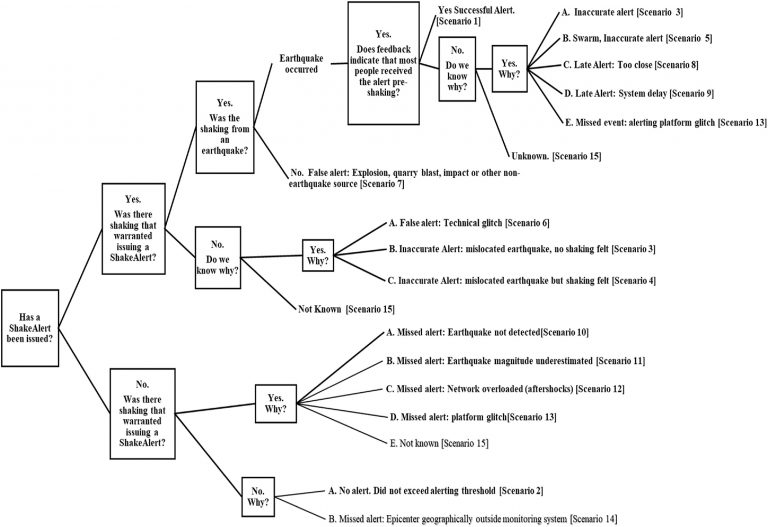
Great expectations for earthquake early warnings on the United States West Coast
Ann Bostrom, Sara K. McBride, Julia S. Becker, James D. Goltz, Robert-Michael de Groot, Lori Peek, Brian Terbush, Maximilian Dixon
To better understand these dependencies and its relationship with ShakeAlert, the earthquake early warning system managed by the U.S. Geological Survey., we surveyed representative samples of adults in California (N = 1219), Oregon (N = 1020), and Washington (N = 1037) in February 2021. Most had not followed protective action guidance to Drop, Cover, and Hold On (DCHO) in earthquakes; and most reported no personal or social harm from prior earthquakes. Nevertheless, expectations and perceived usefulness of EEW were high, and higher still for those who expected alerts to be accurate and easy to use, expressed tolerance of missed and erroneous warnings, and expected to be affected by a damaging earthquake in their lifetime.
![Perceptions, attitudes, and knowledge of ShakeAlert by state and awareness of ShakeAlert, in response to: Which of the following do you know to be true of ShakeAlert? [For those who reported having heard of ShakeAlert: “ShakeAlert is an earthquake early warning system that:“/For those who reported not having heard of ShakeAlert: “My best guess is that ShakeAlert:“]. Response Scale: Please select all that apply.](https://www.shakealert.org/wp-content/uploads/2023/11/ShakeAlert-survey-results-768x460.jpg)
Earthquake Early Warning Riskwork: ShakeAlert’s Operation with Institutionalized Uncertainties
Elizabeth Reddy, Julianna Valenzuela, Nicholas Yavorsky, Nina Guizzetti, and Cecilia Schroeder
To reveal the complexities of ShakeAlert’s earthquake early warning riskwork, we first outline ShakeAlert’s history. Then, we consider the experiences of developing the system during the years it began to be widely available in California, Washington, and Oregon. Our research contributes to efforts to document and better understand the riskwork entailed in hazard risk mitigation, as well as the institutionalized uncertainties that can emerge in such contexts.
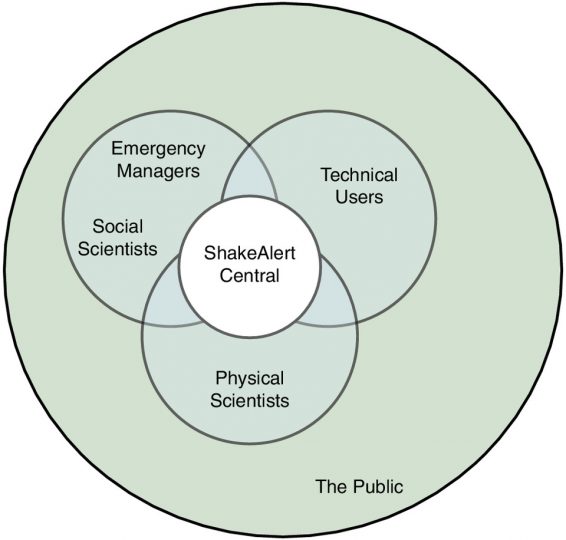
K-12 trade books’ representation of earthquake safety and protective actions: A content analysis
Samuel Cornelius Nyarko, Danielle F. Sumy, Sara K McBride
K-12 (ages 5–18) learners continue to depend on scientific trade books available at their local public and school libraries for information about earthquake concepts. In this research, we combine an iterative qualitative inductive and deductive analysis to explore the representation of earthquake safety and protective actions in 50 trade books. Our findings highlight the issues between accepted earthquake safety and survival actions and the limited and/or inaccurate knowledge represented in some trade books.
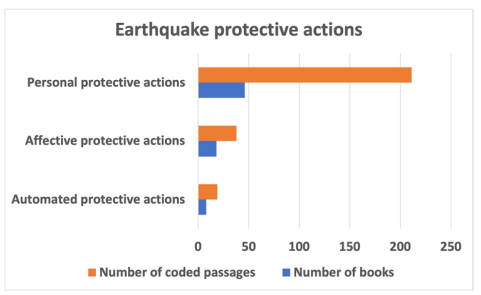
Modeling protective action decision-making in earthquakes by using explainable machine learning and video data
Xiaojian Zhang, Xilei Zhao, Dare Baldwin, Sara McBride, Josephine Bellizzi, Elizabeth S. Cochran, Nicholas Luco, Matthew Wood & Thomas J. Cova
This research studies people’s protective action decision-making in earthquakes by leveraging explainable machine learning and video data. By using the fully annotated video data from the 2018 M7.1 Anchorage, Alaska earthquake, we applied a widely-used machine learning method, to model and forecast people’s protective actions (e.g., drop and cover, hold on, and evacuate) during the earthquake. Modeling results confirm that social and environmental cues played critical roles in affecting the probability of different protective actions.
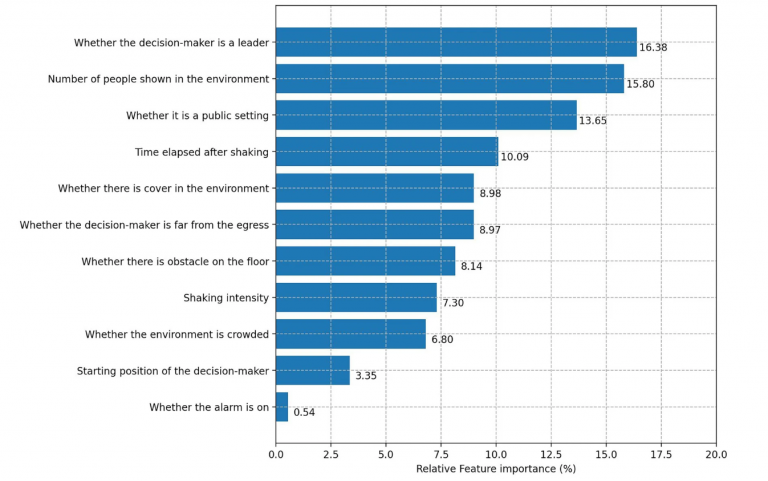
ShakeAlert: A people-focused earthquake early warning system
Robert Michael de Groot, Daniel F Sumy, Sara K McBride, Mariah R. Jenkins, Gabriel Lotto, Margaret Vinci & Shelly Olds
The ShakeAlert EEW System for the West Coast of the United States requires operators to have a deep understanding of how various publics interact via this System. This short conference paper outlines the successes of the ShakeAlert communication, education, outreach, and technical engagement program so far, with a look towards the future.
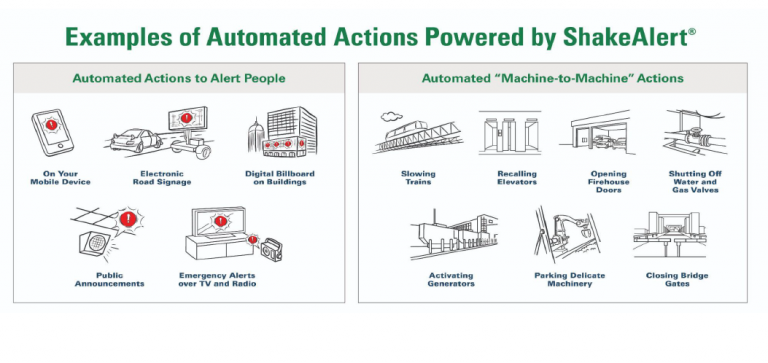
From alert to action: earthquake early warning and deaf communities
Audrey C. Cooper, Michele L. Cooke, Kota Takayama, Danielle F. Sumy & Sara McBride
Gaps exist regarding the effectiveness of the EEW alerts stem from language inequities for deaf and hard of hearing persons in our schools, workplaces and families. This research article concludes that, globally, deaf and hard of hearing (DHH+) persons do not have equitable access to earthquake information, warning systems, training, and participation in disaster decision-making at all levels. Finally, we make key recommendations for improvements.
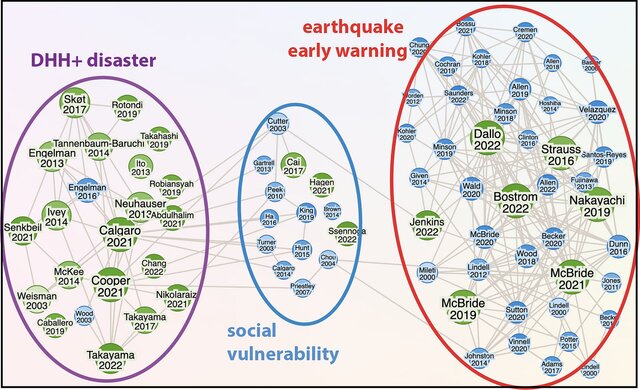
The Ojai California Earthquake of 20 August 2023: Earthquake Early Warning Performance and Alert Recipient Response in the M 5.1 Event
James D. Goltz, David J. Wald, Sara K. McBride, Elizabeth Reddy, Vincent Quitoriano, Jessie K. Saunders
The introduction of new technologies designed to warn the public of natural hazards must include an evaluation component to assure designers and system managers that warnings are being communicated effectively, that the messages are being understood and actions are being taken by warning recipients to protect themselves from the hazard. This article provides an assessment of public perceptions regarding usefulness of earthquake early warning as provided by ShakeAlert and actions taken in response to an alert provided for the M5.1 Ojai earthquake of August 20, 2023 based on survey data submitted as part of the ‘Did You Feel It?’ earthquake reporting system of the US Geological Survey.

Simulating human behavior under earthquake early warning
Matthew Wood, Sara K. McBride, Xilei Zhao, Dare Baldwin, Elizabeth S. Cochran, Xiaojian Zhang, Nicolas Luco, Ruggiero Lovreglio, Tom Cova
Earthquake early warning (EEW) systems can provide warning of earthquakes in their earliest moments of occurrence, potentially allowing individuals to take protective actions before also having to deal with the earthquake-induced ground shaking. This project uses an agent-based model to simulate what an individual could do with the additional time provided by an EEW system. The simulation indicates that, with proper understanding of these alert messages and knowledge of effective actions to take, people can use these messages to better protect themselves during an earthquake.
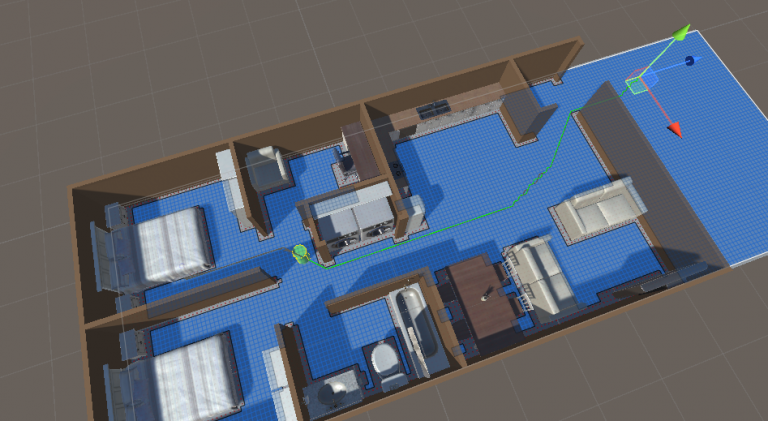
A synthesis review of four literature reviews of disaster risk reduction education for children
Douglas S. Lownsbery
This paper provides a critical interpretive synthesis review of four previously published literature reviews of disaster risk reduction (DRR) education for children. The findings demonstrate a primary focus on relating multiple diverse programmatic elements to program outcomes (the product of learning) with minimal focus on the process of learning (how and why DRR learning occurs). The findings indicate a field that is highly fragmented and that lacks a unifying focus and clear direction. A research agenda is needed to move the field forward that is both learner-centric and learning-centric.

